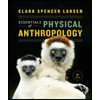Assignment 4 ANTR2005
docx
School
Laurentian University *
*We aren’t endorsed by this school
Course
2005
Subject
Anthropology
Date
Apr 3, 2024
Type
docx
Pages
5
Uploaded by ElderWorld10307
Assignment 4
Department of Anthropology, Laurentian University
ANTR2005, Child Rearing Across Cultures
January 26, 2024
1.
Based on the required videos and readings, outline the nurture versus nature controversy between Margaret Mead and Derek Freeman. (5 marks)
Margaret Mead became wildly know for her anthropological theory surrounding the controversy of nature versus nurture. Mead was chosen by her professor to study adolescents in
Samoa (Ferguson, 2024). The findings in Mead’s study were found to prove nurture over nature as she states the stresses are of adolescent girls are different in comparison to their American counterparts (Mead and Samoa, 1988). Mead’s final findings suggested that the behaviour of adolescent girls was dependent on the culture surroundings (Mead and Samoa, 1988). Through personal studies, Derek Freeman began to see holes in Mead’s study and believes that Mead was deceived by the Samoan community (Freeman, 1983). This study challenged Mead’s findings and attempts to prove unethical gathering of information (Mead and Samoa, 1988).
Freeman explained through his studies that Mead did not immerse herself into the community, and lived with American Samoans, and obtained the majority of her information from selected informants (Freeman, 1983). Freeman suggests that Mead’s advisor in studying had a very strong connection to nurturing approaches to anthropological studies of human development (Freeman, 1983). This would mean that Freeman is insinuating that Mead’s approach to her study was biased to nurture over nature to begin with. He also explains that through his studies, he received information from his allies that debunked Mead’s findings, especially inclusive to the sexual patterns of Samoan adolescents (Freeman, 1983). Mead suggests that sexual behaviour before marriage was both unacceptable and also quite normalized, whereas Freeman found that Samoan culture did not approve of sexual behaviour prior to marriage (Freeman, 1983). Freeman was able to conclude from his information that informants of Mead’s were likely providing her false information to tease her (Freeman, 1983).
Free was able to find that although very far apart, both Samoan and American adolescent girls had very similar experiences of maturation (Freeman, 1983). Freeman’s reports started a controversary in the Anthropology field and his suggestions of Mead’s studies being false stirred
up immense drama.
2.
Based on the required videos and readings, outline and explain the Amish rite of passage
known as “Rumspringa.” Illustrate how this rite of passage follows Arnold van Gennep’s three stages. (5 marks)
Arnold Van Gennep has said that the three stage of the rite of passage are separation, transition and reincorporation (Herdt, 2006). The Amish community allows their youth to participate in a rite of passage tradition called rumspringa, which loosely translate to running around (Outsiders, 2009). This ritual allows for youth at the age of 16 to explore the world of the “English” before deciding to be baptized and fully accept the Amish way of life (Ferguson, 2024). The Amish way of life is quite strict, as founded by Jacob Ammann, it has not changed much since the 16
th
century (Ferguson, 2024). Ammann enforced rules that encompassed dress,
hygeine, grooming, and living styles (Ferguson, 2024). Throughout rumspringa, the young people are separated from their community, and their family and community turn a blind eye to
their actions. While some of the young people continue to live in their communities, many choose to leave and fully experience the English world to the full capacity (Outsiders, 2009). While through rumspringa the youth are able to communicate with their families, but understand that the choices and actions being go against all that was learned growing up. This is
distinctive to the first step of separation in the rite of passage theory as explained by Van Gennep, and proves his theory (Herdt, 2006). This step allows for the youth to understand what their lives could feel like, beyond the Amish community. From age 16 onward, this period is a
Your preview ends here
Eager to read complete document? Join bartleby learn and gain access to the full version
- Access to all documents
- Unlimited textbook solutions
- 24/7 expert homework help
natural time of transition for most youth and adolescents. For the Amish youth through Rumspringa, it can be argued that the transitional phase is more amplified. Rumspringa introduces many new experiences that Amish teens have been told are sinful, such as music, driving motor vehicles, wearing jeans, having a beard over a moustache, and drinking alcohol (Outsiders, 2009). Not only are these youth transitioning into young adult hood, but their transitioning to a new way of life. Lastly, rumspringa allows for the third stage of the rite of passage theory, reincorporation. The concept of rumspringa allows for youth Amish individuals to experience the English life and fall into temptation prior to baptism (Outsides, 2009). This allows for the youth to truly decide the Amish life for themselves, which is an ideal ending to their rumspringa period. Rumspringa is a true depiction of Van Gennep’s rite of passage theory. References
Ferguson, D. M. (2024, January). Child-Rearing Practices in Chiefdom Societies - Margaret Mead and the Samoan Debate. Sudbury, Ontario.
Freeman, D. (1983). Mead's misconstruing of Samoa. Margaret Mead and Samoa: The making and unmaking of an anthropological myth (pp. 281-293). Harvard University Press.
Freeman, D. (1983). Toward a more scientific anthropological paradigm. Margaret Mead and Samoa: The making and unmaking of an anthropological myth (pp. 294-302). Harvard University Press.
Mead and Samoa
(1988). [Video].
Related Documents
Recommended textbooks for you

Essentials of Physical Anthropology (Third Editio...
Anthropology
ISBN:9780393938661
Author:Clark Spencer Larsen
Publisher:W. W. Norton & Company
Recommended textbooks for you
 Essentials of Physical Anthropology (Third Editio...AnthropologyISBN:9780393938661Author:Clark Spencer LarsenPublisher:W. W. Norton & Company
Essentials of Physical Anthropology (Third Editio...AnthropologyISBN:9780393938661Author:Clark Spencer LarsenPublisher:W. W. Norton & Company

Essentials of Physical Anthropology (Third Editio...
Anthropology
ISBN:9780393938661
Author:Clark Spencer Larsen
Publisher:W. W. Norton & Company